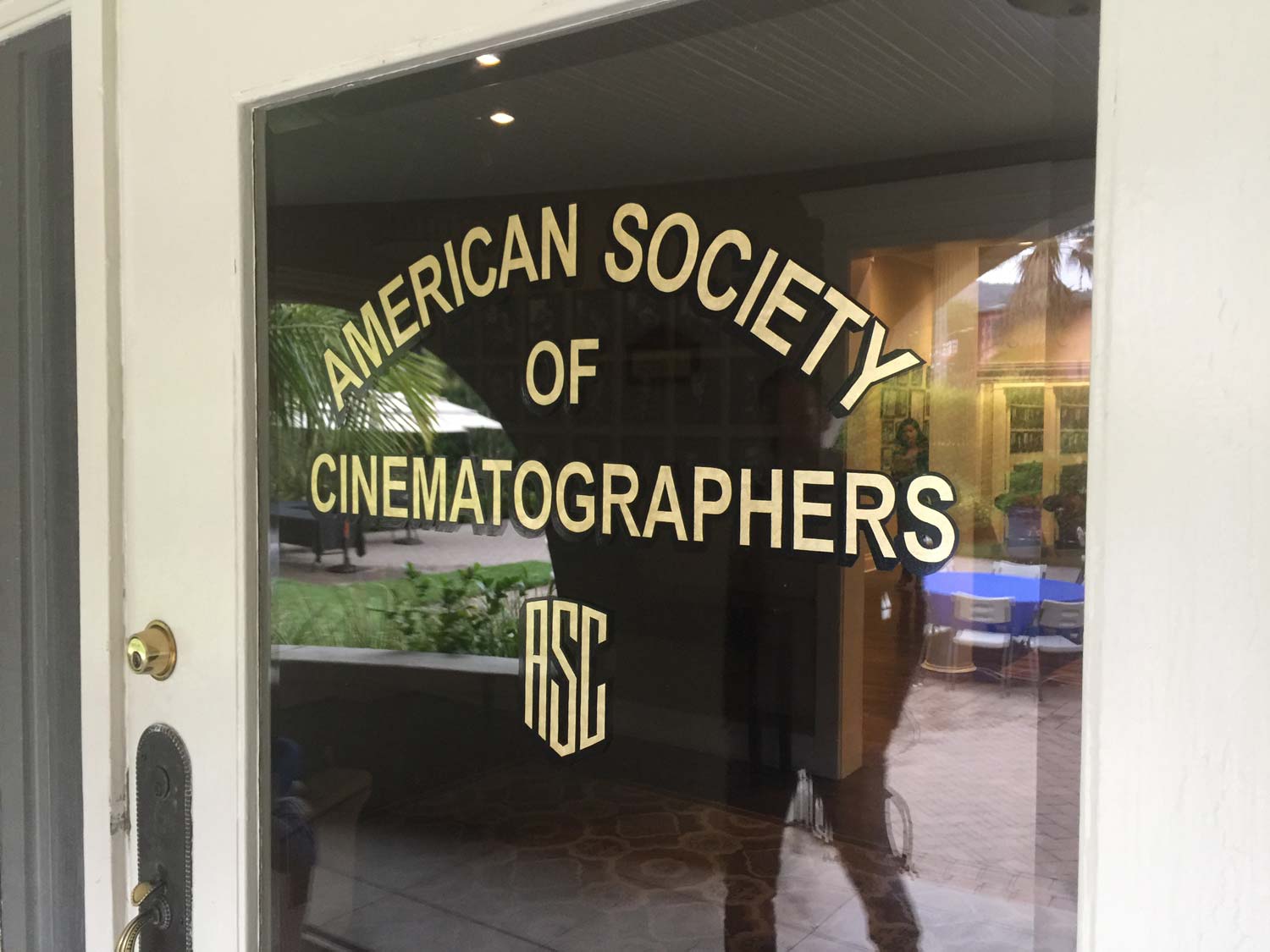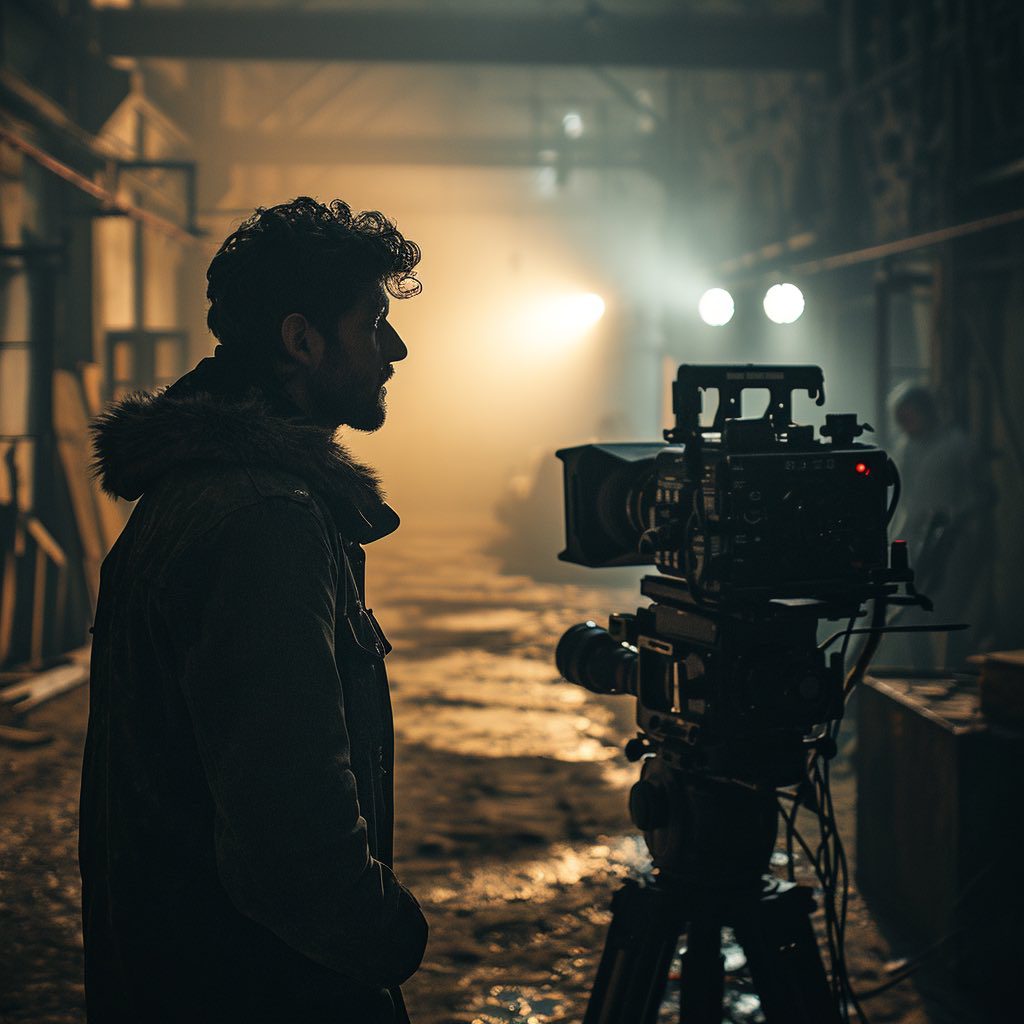ASC Masterclass – Day 2
Day 2 did not disappoint. It was very much a hands on opportunity which everyone took advantage of. All day in a sound stage with really expensive professional equipment just...

Day 2 did not disappoint. It was very much a hands on opportunity which everyone took advantage of. All day in a sound stage with really expensive professional equipment just making normal stuff look beautiful.
Roberto Schaefer ASC AIC
Today in the cinematography masters class we spent the majority of the day, and Mole Richardson, a large manufacturing and rental house of lights for the film industry. Apparently they are pretty good. We spent the majority of the day with Roberto Schaefer who was the DP for 007 Quantum of Solace, The Kite Runner and Finding Neverland.
The whole day was really a hands on showcase of what Roberto could do with all of the professional lights and equipment provided, and it was a truly amazing… again. Its an odd experience to look through a view finder and have it just look like a “movie”, even better than real life in a way. I guess $40,000 lenses can help in that arena.
Motion is in emotion
Next we looked at his movies and he made commentary on them. I will try to be as succinct as possible:
Quantum of Solace. There were a lot of questions about how to expose for flames and Roberto’s advise was to expose for flames and explosions 1.5 stops below what you typically would, but always light the scene as well. He also used technique called “bracketing” which is essentially shooting to takes and compositing in post. One exposed for the highlights and one for the shadows and then recombining. He really wanted the rich orange flame feeling and since ALL of the flames were practical, this is how you do it. I must admit, I have always wondered how the flames in that movie looked so thick. He mentioned the key to this whole thing actually happening was all the prep work that went into it. Roberto says the amount of prep is really what impressed the producers to consider him to take on the job even when they had lots of other candidates they would have preferred over him given his minimal action film experience. Good word. He even shared the shot lists with us, which looked like a foreign language electronic schematic.
Finding Neverland. This discussion was really more about the creative process. There is one scene in the movie specifically where Johnny Depp walks up the stairs in the evening and walks through a door directly into the park. Apparently the door was actually a coat closet they hung a green screen in. It was his idea to make that shot happen, it was only a question of how and if they could do it. He felt like the addition to the script really would help reinforce the fact that Johnny Depp’s character really was in his own little world in his mind. I agree, it was brilliant. There’s also another scene in the film where the kite from the stage travels up into the ceiling of the theater and then lands right in front of Jack’s face. Both ideas from the mind of a very talented cinematographer.
I also heard an interesting saying today that motion is in emotion and should belong to the cinematographer. However that saying did come from a cinematographer.



After another long session looking at clips from his movies, we moved into more of a hands-on teaching session with Roberto and camera. The ARRI Alexa was his weapon of choice. He wore microphone for the majority of the day in order to give easy instructions and education to everyone in the room. The crew at Mole Richardson was really incredible and very professional. Moving with speed and efficiency all day long. I pushed a dolly at an inconsistent speed and missed the mark 2 of 3 times. Apparently it is more difficult than it looks.
Tricks of the trade
Below is an assortment of the most beneficial take aways from the day:
- Roberto’s specific shooting style is to keep everything between the 2.8 and a 4 f-stop. And then adjusting the lights if possible, adding ND or at the very last measure adjusting the sensitivity of the sensor. I found this to be very important piece of advice as his intuitions are very similar to mine.
- His default for shooting on digital sensors is to use Hollywood black magic at least 1/8 in order to take away the digital sharpness that he doesn’t like. I think this is a matter of preference.
- Here’s an interesting one, if you are in a small room and you can’t get the shot that you’re looking for because there isn’t enough room, sometimes it can be helpful to use a swing shift lens shot into a mirror. I know right. Basically start off with the camera framed in the reflection and then tilt or shift away until your subject is where you wanted to be. I thought this was a wonderful use of a tilt shift or swing shift lens.
- One of the most practical pieces of advice he gave all day was about getting an eye light into your subjects eye while not increasing the fill light too much. Shine a light through police of black silk. You can see the example images below. The first is without the light through a black silk the other is with. It does add a little bit of fill but it turned out so beautifully and is a very awesome trick. Well done Roberto.
- Finally his advice was to go to the Camerimage festival in Poland in the middle of November. His words about it were, “it’s fabulous, you have to go. In fact I’m going to refuse any jobs that comes around that would keep me from going to again this year.

Day 2 was great. Kind of dragged on in the middle, but I would still highly recommend coming. If nothing else, you are going to be amongst people who care about the things you do and were accepted to the program. So the talent level is pretty high. In this class, 14 people are from overseas. That’s saying something. Tomorrow we get an in-depth go round from Bill Bennett, who has done some ridiculous commercial spots. I’m excited.


